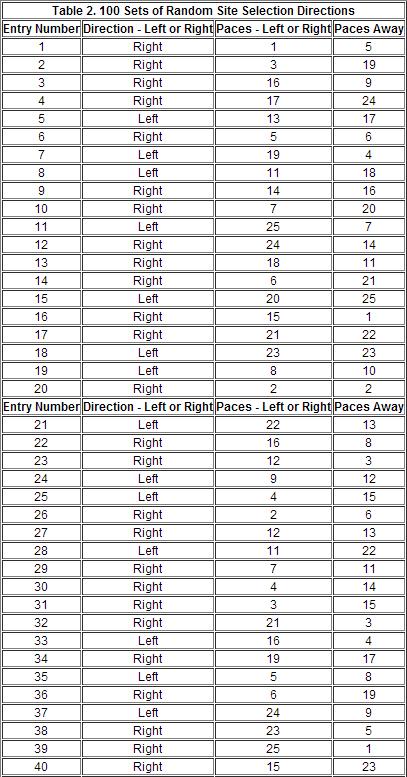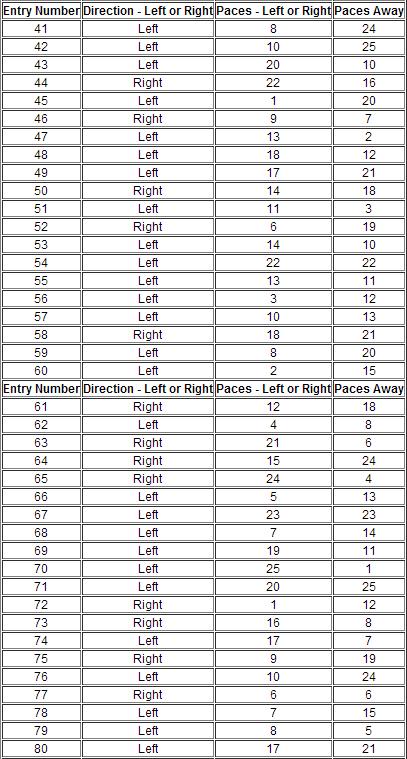Procedure for Selecting Random Sites for Sampling
ENTFACT-113: Procedure for Selecting Random Sites for Sampling | Download PDF
by Doug Johnson, Extension Entomologist
University of Kentucky College of Agriculture
These figures are designed to help you remove your personal bias while selecting sampling points in a field. You will have to modify them to fit larger and smaller fields.
- Divide the field into general sampling areas.
- Randomly select one number between 1 and 100 for each general sampling area.
- Consult Table 2. 100 Sets of Random Site Selection Directions, under ENTRY NUMBER, to find the random numbers you have selected. Record the set of walking instructions listed in the table for each of your random numbers.
- Select the first area of the field to be scouted.
- Go to the edge of that area. If this is a field edge go 30 paces into the field. This is your starting point.
- Use the walking instructions to locate your actual sample site.
- Take your sample.
As an example: let's look at a small corn field of 20 acres. According to the University of Kentucky IPM Scout Manual a field this size requires 3 samples to be taken.
- Divide the field into three general sampling areas.
- Select three random numbers say, 2, 31, 24.
- Look at Table 2 for Entry Numbers 2, 31, and 24 and you will find the following walking instructions:
- Select the first area to be scouted.
- Go to the edge of the first area. If it is a field edge go into the field 30 paces. From this starting point, follow the walking instructions for General Sampling Area 1 in the above table: Turn right, walk 3 paces, turn back to your original direction, take 19 paces, sample the area in front of you.
- Go to the next general sampling area and repeat the process using the second set of walking instructions (General Sampling Area 2 in the table above).




Through experience you will find that the number of paces specified may be too many or too few to use depending upon field size. If the field is very large, simply multiply the number of paces by 10 or 100. If the field is very small, divide the number of paces by some number (e.g. 10) to keep you from running over the end of a sampling area.
Remember the objective is to remove bias from your selection of sites. There is nothing magic about these numbers.
Revised: 5/96
CAUTION! Pesticide recommendations in this publication are registered for use in Kentucky, USA ONLY! The use of some products may not be legal in your state or country. Please check with your local county agent or regulatory official before using any pesticide mentioned in this publication.
Of course, ALWAYS READ AND FOLLOW LABEL DIRECTIONS FOR SAFE USE OF ANY PESTICIDE!
Photos courtesy University of Kentucky Entomology
